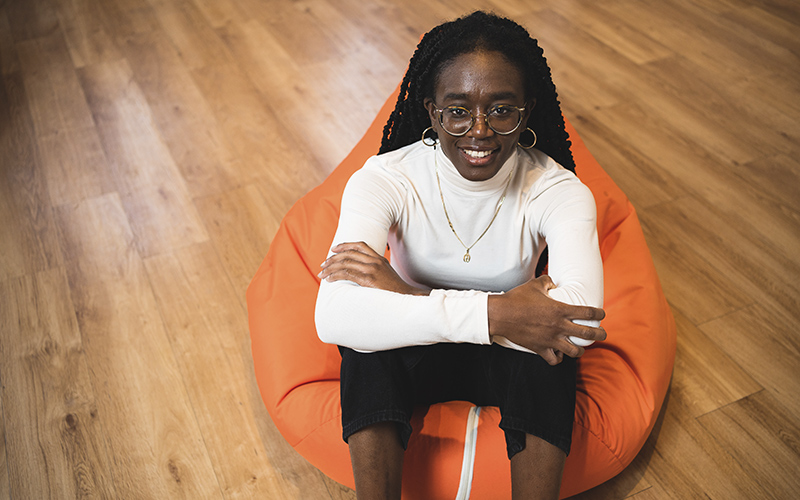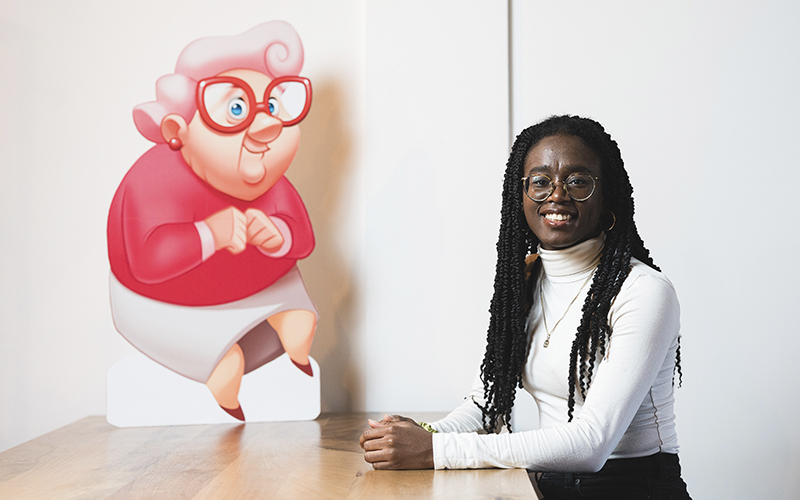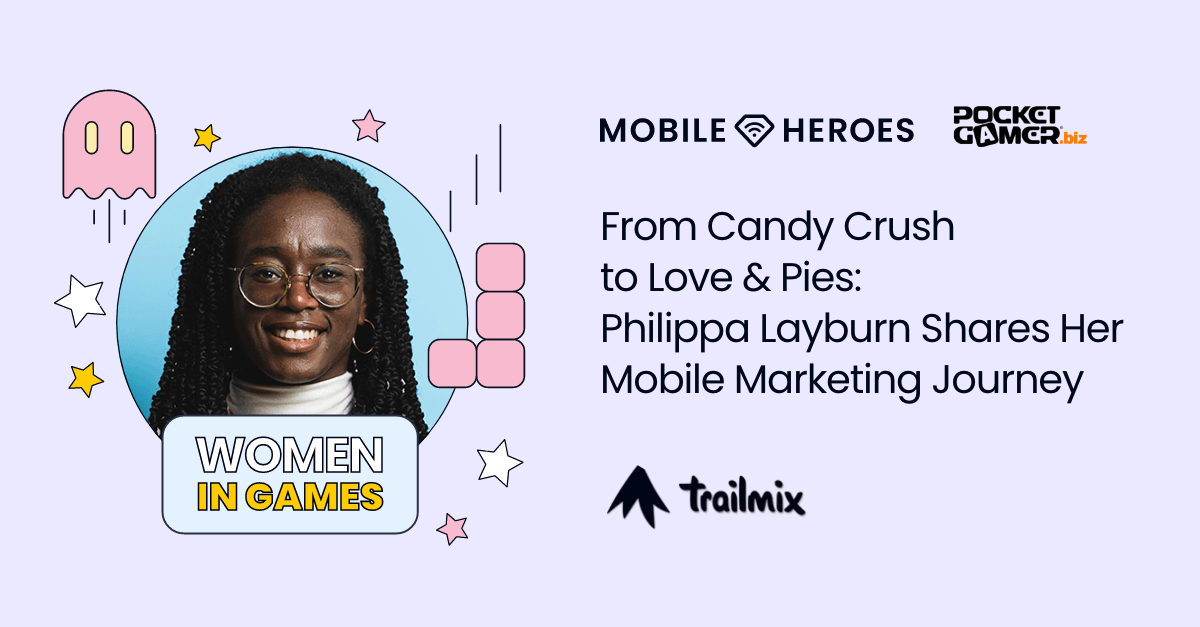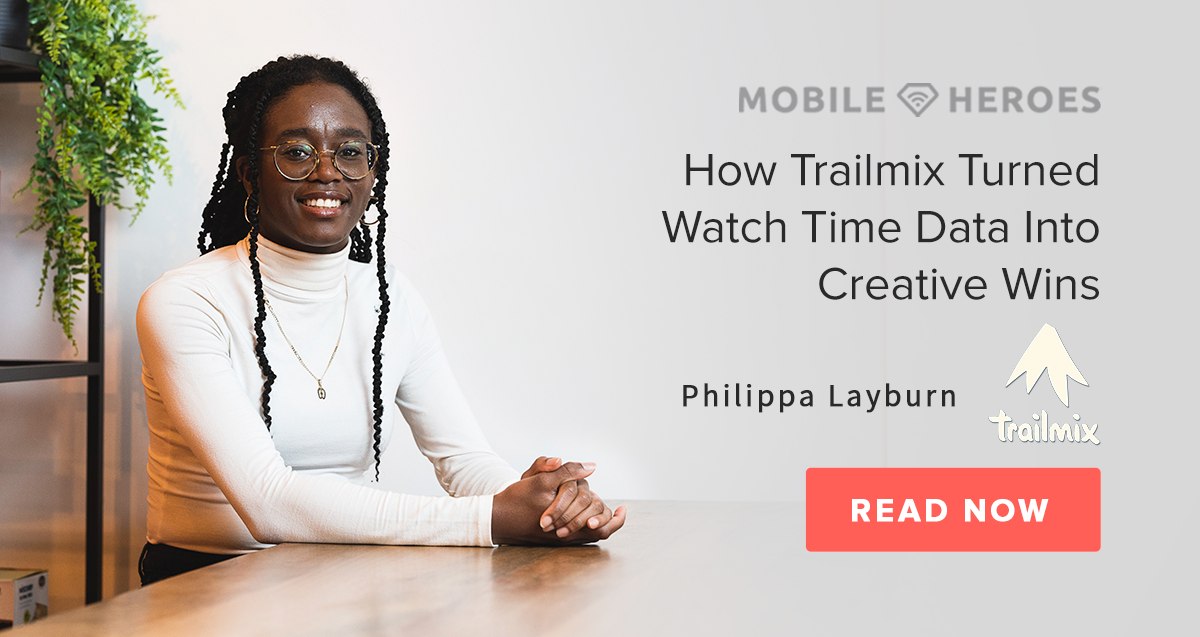Philippa Layburn
Senior User Acquisition Manager
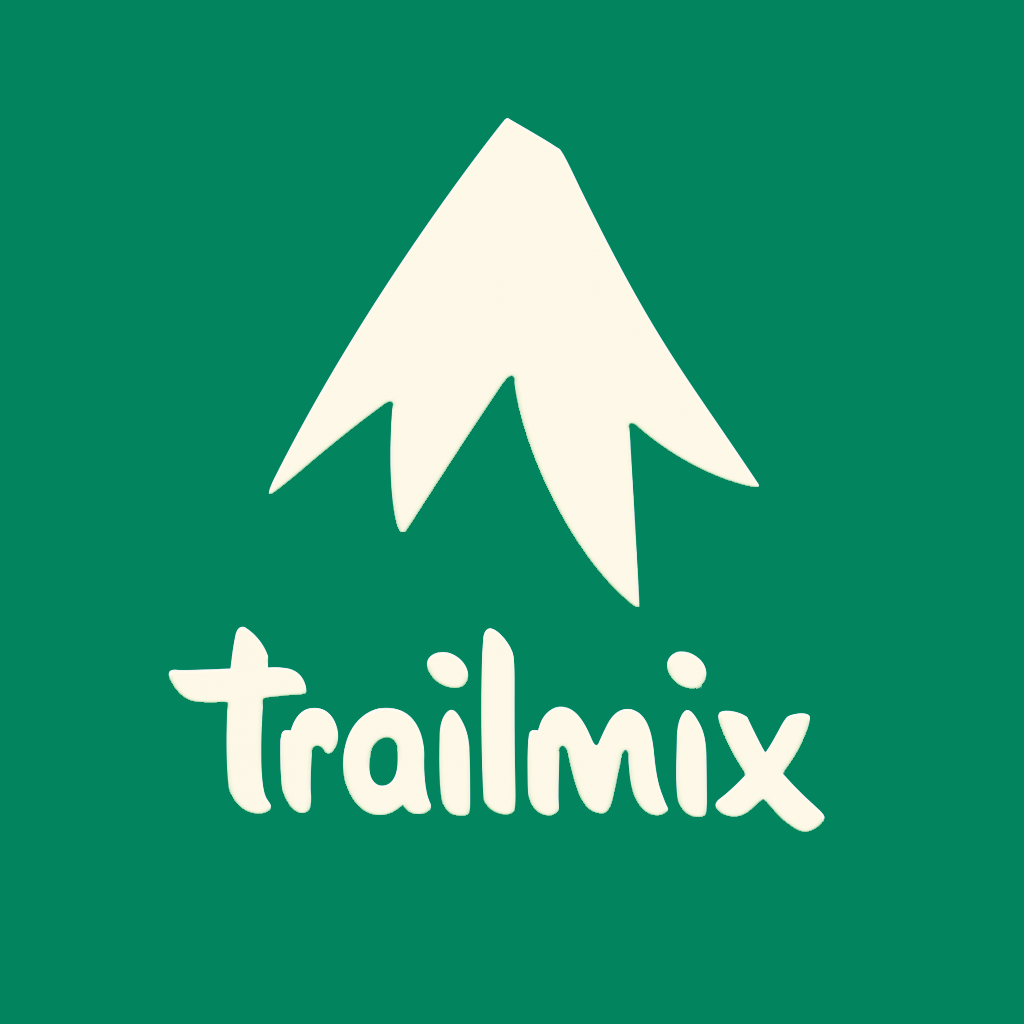
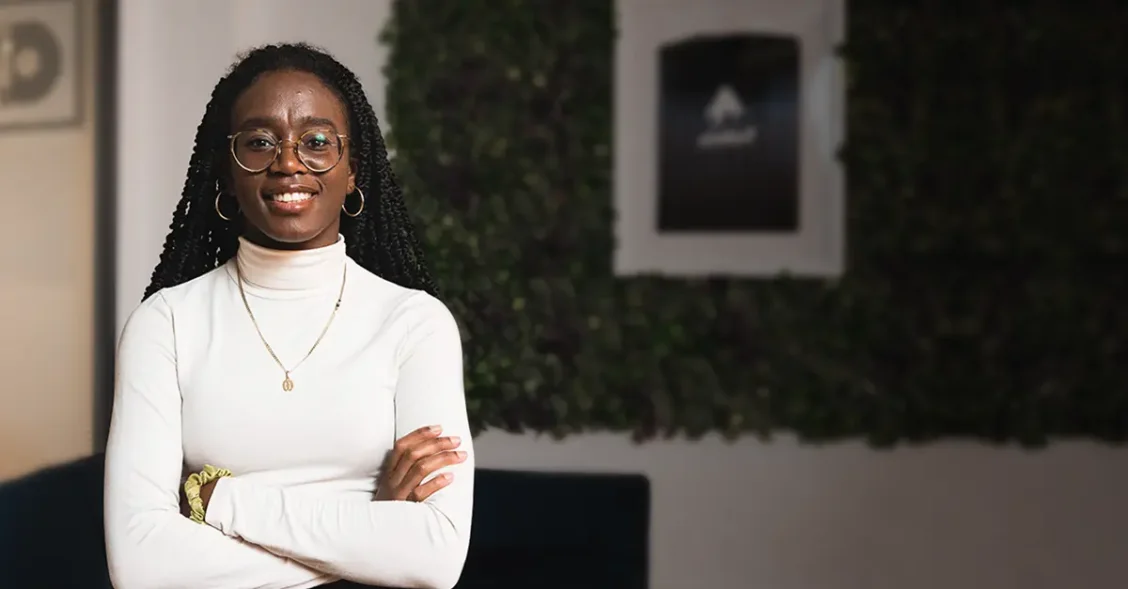
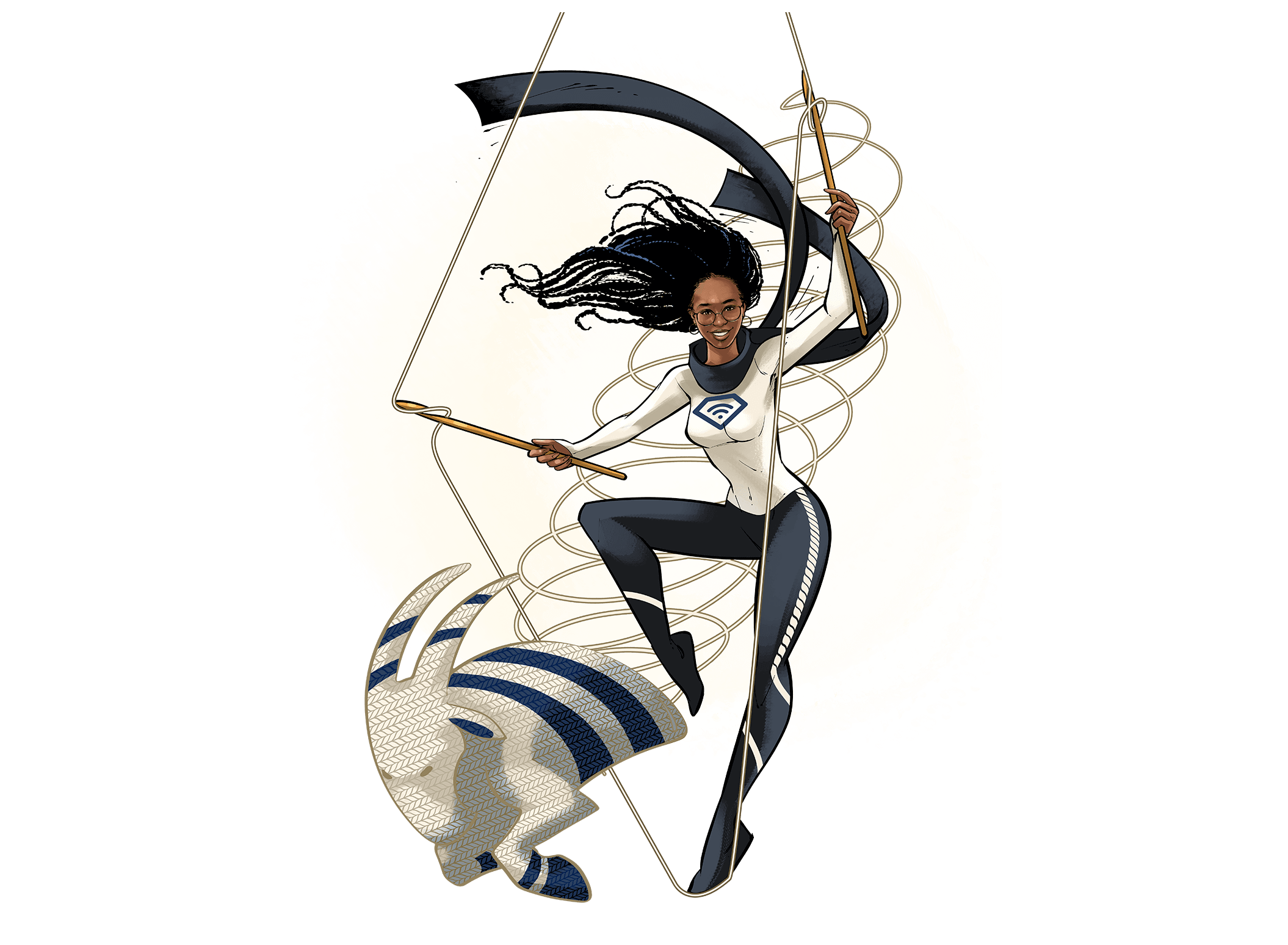
Philippa Layburn is Senior User Acquisition Manager at Trailmix. Her career began in a publishing house with a portfolio that included various apps from sports to audio. After nearly two years there, Philippa made the move to King, spurred by her love of Candy Crush. She spent over three years working across their key casual titles and on the soft launch of their newer RPGs. Philippa honed her performance marketing skills, scaling many games on Google Ads and other channels. Now, Philippa is on a journey with Trailmix to make Love & Pies the biggest casual game around.
In your own words, tell us about the app(s) that you manage.
I work on Love & Pies, a beautifully crafted, causal merge-two game with a deep story world and decoration elements. Our game is unique because of the level of storytelling. We pride ourselves on crafting a strong narrative. Our story is full of drama, romance, mysteries and exciting twists and turns. We offer diverse characters with depth, and we aim to provide a sense of belonging and nourishment. It pays off when players play the game and see themselves represented in the app.
The game focuses on the protagonist Amelia Green. She moves back to her family home in the countryside after a divorce—only to find her Mum’s cafe on fire & and her Mum missing! Throughout the game, Amelia tries to discover what happened while restoring the cafe to its former glory. A host of quirky locals quickly join Amelia to help or hinder her on her journey. It’s wholesome but full of havoc!
How did you get started in mobile marketing?
I started my career in ad ops, building campaigns across different publishers. A key aspect of my job was creating responses to client briefs to win business for exciting ad partnerships. Being part of a small 10-person startup exposed me to many experiences. No two days looked the same for me, which I thoroughly enjoyed.
I worked closely with different clients ranging from government organizations to Universal Music, onboarded and built client relationships for new publishers, built tracking links, and carried out campaign optimizations. Highlights of my early career included launching inspiring ad campaigns across various publishers like SoundCloud, Waze, My Fitness Pal and Musical.ly (now known as TikTok). One of them was a Musical.ly brand campaign with Lego Friends.
What do you like most about mobile marketing?
I love the blend of science, data and art. Maybe it’s my background in psychology, but mobile marketing more or less follows the scientific method. Testing starts with a hypothesis, and then you design how you want to test that hypothesis. Finally, you dive into the data to understand the results, develop conclusions, determine next steps and form a new hypothesis.
But you also need creativity to develop new ideas and to stand out from your competitors—which is not easy in such a cluttered market! It is exhilarating when something you decided to test becomes the new “best practice” for your entire team.
What do you see as the next big thing in mobile marketing?
It will be interesting to see what new players enter the scene and shake up the mobile marketing world. I see innovations in social media and entertainment platforms bringing significant changes to mobile marketing in the upcoming years. Companies like Netflix have diversified into gaming and recently added an ads-based subscription to their platform. This could be a huge new channel for mobile ads. I see the potential for high-quality video ads and exciting ways to align with content. We have also seen the growth of newer apps like TikTok emerging. They’ve seen enormous growth thanks to their content and unique audience demographics.
We already see new social media platforms and there will always be new apps coming, for example, Be.Real pop up. I see entertaining ways to advertise on the Be.Real platform with more UGC-driven creatives. With gaming being the biggest player in the entertainment world, more and more companies will want a piece of the pie, leading to big innovations.
What strategies work best to convert installs into engaged app users?
Having a close relationship with your data team helps a lot. We are interested in understanding what user behavior leads to purchases, as well as drop-offs or sticking points for a user. With the data team’s help, we can build UA campaigns with more context. For example, we recently worked with data to help identify predictive signals for purchasers, giving us extra ammunition for new and existing UA campaigns. Working together on retargeting campaigns is key for bringing back engaged users. It is a must to collaborate to build good player segmentation. At Trailmix, we are only beginning our retargeting journey. Recently, we determined who should count as a lapsed player based on our unique user data set.
Lastly, another important part of acquiring engaged users is working with product. We have to be in the know about product updates and features to align our creative and messaging.
In the past year, what is one tip you can share which made the biggest performance difference for your UA strategy?
A new thing for me has been playable ads on Google UAC campaigns. There is still a lot to learn and test to determine best practices, but they can be the source of serious scale and ROAS.
What advice can you offer marketers to successfully re-engage mobile app users?
I mentioned the importance of audience segmentation in my previous answers. However, to dive even further, you can use audience insights and user data to personalize where possible. Imagine lapsing from a game because you have no gems left and being served an ad with an offer for 100 free gems. That would make you more likely to come back, right? Retargeting puts you in a more advantageous position than UA because you know more about your users. Personalizing your content is a great way to get people back into the game since it gives users a reason to return by making ads more relevant.
What’s your top tip when it comes to mobile ad creative?
Be meticulous when it comes to analyzing creatives. Of course, everyone should be testing their creatives to determine what concepts work, but that is only the start.
Having a winner is great, but you must know why it won. This is where you need to get scientific and hypothesize. We are focusing more on iterating, not only because it gives more assurance of creative success but because it is the best way to learn why something won. Was it the character you used, the art style, or the gameplay? Everything should be iterated down to the end card used because it can all have an impact. For example, we now understand the best timing for our gameplay to appear, what items work best in gameplay, and other insights that help shave down our CPIs.
We also gain insights from looking at the full spectrum of metrics. Outside of CPI, some metrics can tell you about the quality and enjoyability of your ads. CTI, loyal user rates and watch time data help us learn more about creatives that did not win.
Unless you are testing creatives on every channel, it is unlikely that your winners will win everywhere and losers will lose everywhere. I learned the importance of this idea at King and eventually built strong relationships with the creative team to develop creatives designed to run on Google UAC. I took steps to understand the nuances of advertising on YouTube and Admob to help brief our creative team on bespoke creatives. This helped when it came to scaling countries like Japan, which tend to have more YouTube inventory, or launching our RPG titles utilizing influencer-style creatives that scaled more on YouTube than Admob.
Lastly, your UA and creative teams need to keep up with UA ad trends and consume as many ads as possible. The more ads you watch, the more you can understand the tropes used for different apps/channels.
What are your top 3 go-to resources for keeping up with the mobile ad tech industry?
We are lucky at Trailmix to have engaged colleagues and an amazing investor company—with many investee companies and a wide range of expertise, learnings and industry knowledge. I turn to my colleagues at Trailmix, the wider Supercell circle, and of course, there are plenty of great websites out there.
